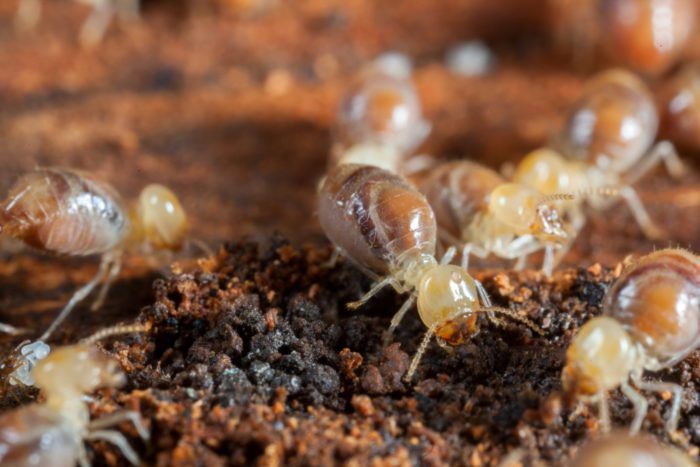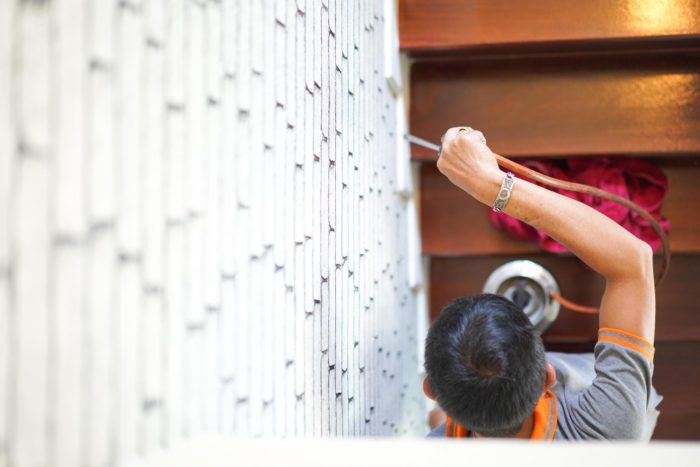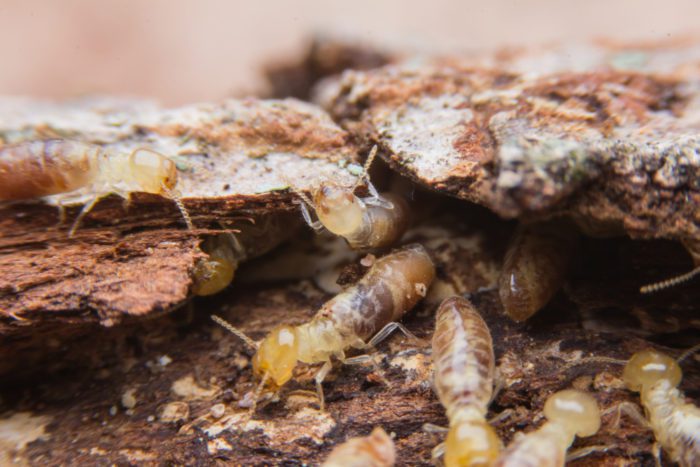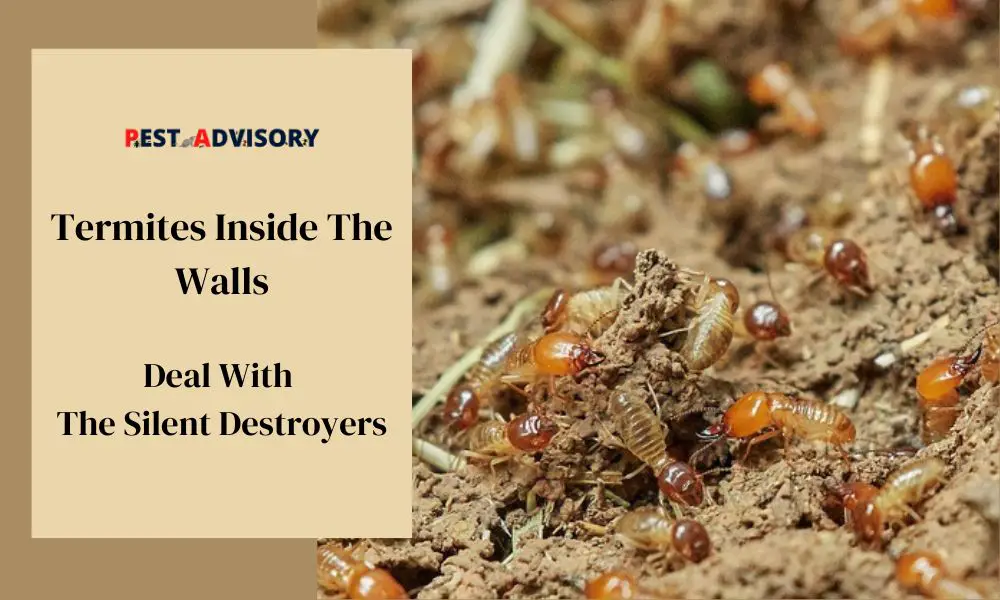Termites inside the wall can be a serious and costly problem for homeowners. The damage caused by these tiny insects can go unnoticed for months, if not years, and can significantly compromise the structural integrity of your home.
To shed some light on this topic, we had the opportunity to speak with Skye Sakuma, a pest control business owner with over 15 years of experience dealing with termite infestations.
In this article, Skye will share his expertise and provide valuable insights to help homeowners better understand how to identify, manage, and prevent termite problems.
Important Note: If you're tired of pests and want a reliable solution, then you should definitely consider seeking help from a professional pest control company. DIY solutions can be effective, but if you're dealing with a significant pest infestation, you don't want to rely solely on DIY methods. Pest control companies typically don't charge huge fees. You can fill out this form to receive free quotes from the top local pest control companies, and compare the quotes and see for yourself. Then, finally, your pest problems will be eliminated for good.
So, let’s dive in and get the expert advice we need to protect our homes from these pesky insects.
About Skye Sakuma

Skye Sakuma, the owner of Y’s Pest Control, a family-owned and operated company based in the South Bay area of Los Angeles.
With over 15 years of experience in the pest control industry, Skye has become a trusted and respected expert in the field.
His company is known for its exceptional service and commitment to providing effective solutions to clients dealing with pest problems.
How Do I Know If I Have Termites In My Walls?
Skye Sakuma has provided helpful information to identify a termite infestation in the wall. The signs include hollow-sounding wood, the presence of droppings, discarded wings, mud tubes, and visible damage like buckling or warping. The first important step to deal with termites is to keep an eye out for these signs. So, let’s take a look at common signs of termite infestation.
Hollow-Sounding Walls
According to Skye “Termites often eat wood from the inside out, so if you tap on your walls and it sounds hollow, it could be a sign of termite activity and damage.”
Termites typically eat wood from the inside out, leaving only a thin layer of wood on the surface. When you tap on wood that has been hollowed out by termites, it produces a distinctive hollow sound because there is less wood for the sound waves to travel through.
Presence of Mud Tubes
Skye says “Termites build mud tubes to travel from their nest to a food source, which can be found on walls, floors, or other surfaces.”
These tubes may appear as pencil-sized tunnels running along the foundation of your home, walls, or floorboards. If you see these mud tubes on your drywalls, then most probably, termites are present in them.
Discarded Wings
Skye says about this sign “When termites swarm, they shed their wings, which can be found near windowsills, doors, or other entry points.”
If you find discarded wings inside your home, it means that the termites have already found their way inside and could be damaging your walls or other wooden structures.
Mount of Droppings
Skye explains “Termite eats cellulose of wood and digests into sugar in their body. Their droppings will start showing after a few years from they started eating a wood piece.”
Termite droppings are also known as Frass. This is a sawdust-like material that termites leave behind as they tunnel through wood. If you notice frass around your walls, it may be a sign of termite activity.
Pinholes
These are used as eviction points for their feces and dead termites. It can appear on both, the standard wall and even the drywall. During the process of drilling, the dirt that is generated is also ejected from these points.
Visible Damage
According to Skye “In severe cases, you may notice visible damage to your walls, such as buckling or warping.”
Bulking
Buckling is a type of physical damage that occurs when the wood starts to bend or bulge outward. This happens when the termites have weakened the wood to the point where it can no longer support its own weight or the weight of any objects resting on it.
This can be especially dangerous in structural supports like beams or joists, as it can compromise the integrity of the entire structure.
Warping
Warping, on the other hand, is a type of physical damage that occurs when the wood starts to bend or twist out of shape. This can happen when the termites have eaten away at different parts of the wood, causing it to become uneven or unbalanced.
Warping can be especially problematic in doors or windows, as it can make them difficult or impossible to open and close.

Causes of Termite Infestation in Walls
Moisture
Termites are attracted to moist environments and will seek out areas with high levels of moisture to build their colonies. If there are leaks in your plumbing, air conditioning, or other sources of water in your home, it can create a conducive environment for termites to thrive.
Wood-to-Soil Contact
Termites typically build their colonies in the soil, but they can also build them in wood that is in contact with the soil. If the wood in your home is in direct contact with the soil, it can create an easy pathway for termites to enter your home.
Wood Debris
If there are piles of wood debris near your home, such as firewood, lumber, or even mulch, it can attract termites and provide them with an easy food source. Once they’ve finished feeding on the wood debris, they may move on to your home.
Structural Flaws
Cracks, gaps, or other structural flaws in your home can provide easy entry points for termites. They can enter through these flaws and start to build their colonies inside your drywalls.
Poor Ventilation
Poor ventilation can lead to the buildup of moisture in your home, which can attract termites. If your home is poorly ventilated, it can create a conducive environment for termites to thrive and infest your walls.
Homemade Termite Killers
While professional help is often necessary to fully eliminate a termite infestation in walls, there are some DIY methods you can try to help control the problem.
Termiticide
Termiticide is a chemical that can be used to kill termites in drywalls. Identify the infested area and drill small holes into the wall.
Follow the manufacturer’s instructions and spray the termiticide into the cracks and holes of the walls with the help of a spray bottle or applicator.
Make sure to apply the termiticide thoroughly and evenly to ensure maximum effectiveness.
Boric Acid
Boric acid is a natural insecticide that can be applied to infested areas.
Mix boric acid with water and apply the solution to the affected area using a spray bottle or brush into the cracks and holes of the walls.
The acid will kill the termites on contact.
Orange Oil
Orange oil is a natural oil that contains d-limonene, which is toxic to termites.
Dilute the orange oil with carrier oil, such as coconut oil or mineral oil, before use.
Make small holes in the walls with the help of a drill and apply the diluted orange oil to the infested area using a spray bottle.
Make sure to apply the oil thoroughly and evenly to ensure maximum effectiveness.
Repeat the application every few weeks until the infestation is eliminated.
Orange oil is not as effective as a professional treatment, so it may take several applications to completely eliminate the infestation.
Note: It’s important to note that these DIY methods may not be effective in fully eliminating a termite infestation in drywalls, and may only serve as temporary solutions.
For best results, it’s recommended to consult with a professional pest control service to develop a comprehensive treatment plan.
If you are from the South Bay area in Los Angeles, you can get professional help from Y’s Pest Control for the best results.

How Do I Protect My Walls from Termite Infestation?
Eliminate Wood in Contact with the Ground
Termites need moisture to survive and will travel through the soil to reach the wood. If there’s wood in contact with the ground, termites can easily find and infest it. To prevent this, remove any wood touching the soil and replace it with concrete or metal supports.
Do Not Let Moisture Accumulate Near the Foundation
Moisture can accumulate near the foundation of your home, providing a perfect environment for termites to thrive. To prevent this, ensure that rainwater drains away from the foundation and that the soil around your home is sloping away from the house. You can also install gutters and downspouts to divert rainwater from the foundation.
Reduce Moisture and Humidity in Crawl Spaces
Crawl spaces can be a breeding ground for termites, especially if there’s moisture or humidity present. To prevent this, ensure that crawl spaces are well-ventilated and that any moisture is removed with a dehumidifier or through proper drainage.
Don’t Store Wood near Foundations or in Crawl Spaces
Storing firewood or wood debris against your home’s foundation or inside crawl spaces provides an easy entry point for termites. Store firewood at least 20 feet away from your home and off the ground. Remove any wood debris from your yard promptly.
Regular Inspections
Regular pest control inspections and treatments can help prevent termite infestations or detect them early on. A professional pest control expert can identify areas of your home that are at risk of infestation and recommend preventive measures or treatments.
Frequently Asked Questions: Answered By Skye Sakuma
What kind of damage can termites cause to my walls?
“Termites can cause significant damage to your walls over time, as they eat away at the wood and weaken its structural integrity. This can result in costly repairs, as well as potential safety hazards if the walls collapse.”
How do Termites Get into Walls?
“Termites can enter walls through small cracks or openings in the foundation, siding, or roof. They can also travel through wood that is in contact with soil, such as fence posts or wood piles.”
What should I do if I suspect I have Termites in my Walls?
“If you suspect that you have termites in your walls, it is important to contact a pest control professional as soon as possible. They can confirm the presence of termites, assess the extent of the infestation, and recommend a treatment plan.”
Can I treat a Termite Infestation in my Walls myself, or do I need to contact a pest control professional?
“Treating termite infestations in walls can be a complex and difficult process, and it is generally recommended to hire a pest control professional. They have the knowledge, experience, and specialized equipment necessary to effectively eliminate the termites and prevent future infestations.”

Conclusion
It is clear that homeowners must be vigilant in identifying and managing termite infestations to prevent costly and dangerous damage to their homes.
Regular inspections, treatment, and prevention measures are essential for protecting against these tiny but destructive insects.
With Skye’s expert advice, homeowners can be better equipped to handle termite problems and maintain the structural integrity of their homes for years to come.

